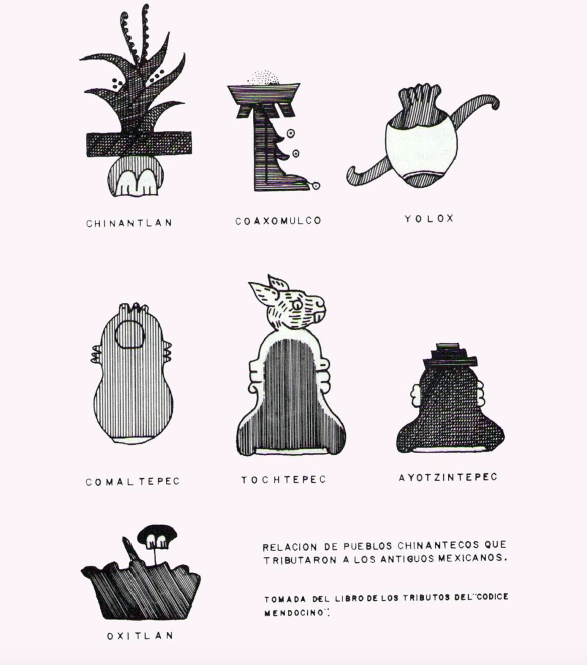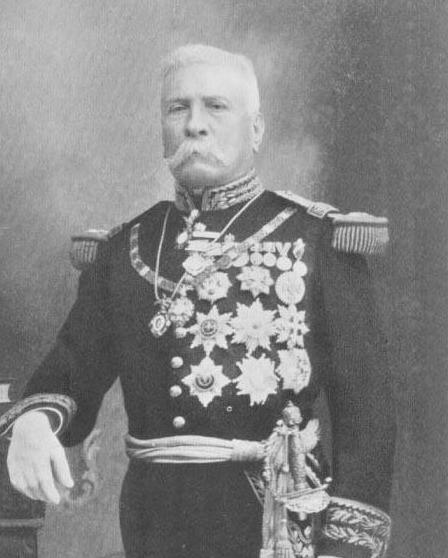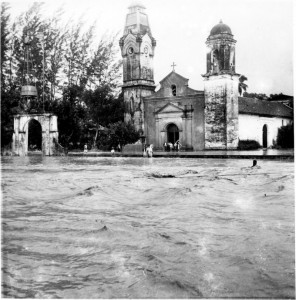First Settlements
The archaeological evidence indicates that more than 3500 years ago there were human settlements in the Chinantla. This time coincides with the origen of the Chinantec language, long before the Spanish language. In addition, more than 1,500 years ago the Chinantec variants emerged, which suggests that they were dispersing and migrating to other points of the Chinantla.
Legend of the Origin of the Chinantla
In spite of the archaeological evidence, a popular legend that tries to explain the origin of the Chinantla indicates that around the year 1100 AD, King Quiana founded the kingdom Chinantla and its capital Chinantlan was where now is Valle Nacional.
The Chinantla had internal conflicts that were dividing the region into different kingdoms (city states). One of those kingdoms had its capital in San Felipe Usila.
The Aztecs conquered the Chinantla and founded Tochtepec
Towards the year 1455, the Aztecs conquered the Chinantla and founded Tochtepec (Tuxtepec) from where they dominated the Chinantla. In the book Codex Mendoza, where the Aztecs enlisted the names of the conquered towns, Tochtepec and other towns of the Chinantla appear.

The name of Tochtepec is translated from Nahuatl as “on the hill of the rabbit” and is probably due to the fact that these lands with lush vegetation are very fertile. It is said that Moctezuma I came to Tochtepec in search of tributes (gold, vanilla, quetzal feathers, etc.) and settled in its ceremonial center, which the settlers called the Palace or Castle of Moctezuma. Only ruin remains of this building.
Arrival of the Spaniards
When the Spaniards arrived at the Port of Veracruz, Moctezuma II sent the governor of Tochtepec to meet with Hernán Cortés and receive him with gifts. When Hernán Cortés meets Moctezuma II in 1519, he asks him about the gold, then Moctezuma II reveals that the gold came from Tochtepec. The ambition of the Spaniards for gold motivates them to conquer Tochtepec and in honor of their homeland they decided to change the name and found the town of Medellín on May 26, 1526.
In addition to gold, the Spaniards settled here for the perfect climate for cultivation, making it one of the most important agricultural areas of the new Spain.
The Porfiriato (Dictatorship)
In Ojitlán, Porfirio Díaz decreed on January 10, 1876, the Plan of Tuxtepec that sought to overthrow President Sebastián Lerdo de Tejada. The Plan was successful and in November of that same year Porfirio Díaz became president of Mexico. Although formally (in elections) he became president on May 12, 1877.


During the Porfiriato, Valle Nacional was known as the Valley of Death for the slavery exercised against the Indians to work in tobacco crops. You can visit the remains of these former tobacco haciendas and the jails used for political prisoners.
Foundation of the Villa of San Juan Bautista Tuxtepec
The Villa of Medellín officially changed its name to the Villa of San Juan Bautista Tuxtepec in 1889 and was granted the title of city on April 28, 1928.
The Great Tragedy of 1944
One of the tragedies that marked Tuxtepec was the flood of 1944. The tragedy was so big that in the headlines of national newspapers it was said that Tuxtepec had disappeared. In the streets, people ran for safety, but the prisoners who were under the city hall were trapped. The authorities then decided to open the prison so that the prisoners escaped and could save their lives. This act gave rise to the commemoration of the “day of the prisoner” that is celebrated in the state of Oaxaca every September 24.


Construction of Dams and Displacement of Indigenous People
After the great flood, the Mexican authorities decided to work on projects to contain the flow of rivers and thus avoid more tragedies. This is how the construction of the Miguel Alemán dam (Temascal) was decided in 1947. This affected indigenous communities, mainly Mazatec, who were relocated and their lands were expropriated.
The Miguel Alemán dam was not enough and floods continued throughout the Papaloapan region. For this reason it was decided to expand the Miguel Aleman dam by building the Miguel de la Madrid dam (Cerro de Oro). As it happened before, this affected indigenous communities, but this time the Chinantecs were expropriated from their lands and relocated.
Tuxtepec now
Currently, Tuxtepec has grown to become the second largest city in Oaxaca State. The city of Tuxtepec is very well connected with the rest of the country, there are buses that take you to Cancun or Mexico City.

